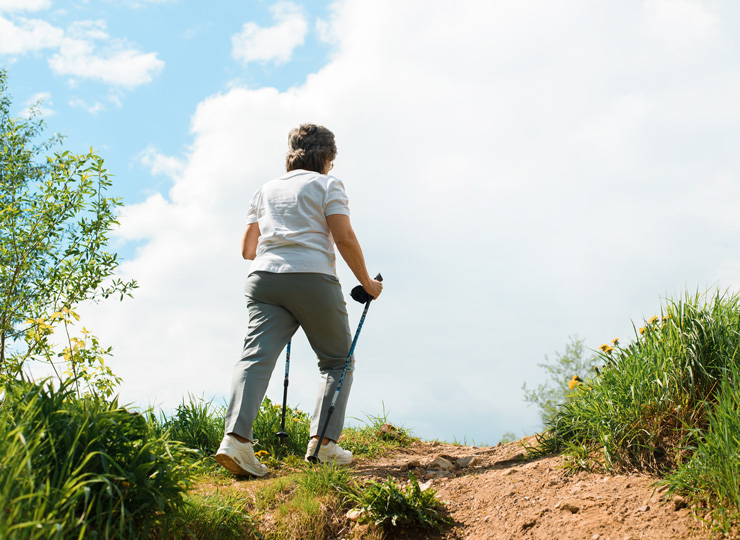
February 14, 2022
Studies show that exercise is good for the brain. A daily walk, jog or swim, or regular cycling or dancing, can lower the risk of Alzheimer’s disease and other forms of dementia. Now a new study found that even light physical activity, like walking at a leisurely pace, may help stave off dementia in older men and women.
The study looked at 62,286 older men and women aged 65 and older who were living in Korea. All filled out detailed questionnaires about how much exercise they got, including how often and how intense the physical activity was. None had dementia at the start of the study.
The researchers followed them for up to five years. During that time, some 6 percent developed Alzheimer’s disease or another form of dementia.
They found that compared to adults who were sedentary and got very little exercise, highly active people, such as those who jogged or swam laps for at least 20 minutes five times a week, were 28 percent less likely to develop dementia. Those who were moderately active, such as those who took a brisk walk or rode a bike casually for 30 minutes five days a week, were 20 percent less likely to develop dementia. And those who were only lightly active, such as those who were on their feet for at least 30 minutes most days, were 10 percent less likely to develop dementia. The findings were published in JAMA Network Open.
Among the study participants, 35 percent were categorized as being inactive, getting almost no daily exercise; 25 percent were considered to be lightly active; 25 percent were moderately active; and 15 percent were highly active.
Light intensity activities require the least amount of effort, and consume less than 3 METS, or metabolic equivalents, a measure of exercise intensity. One MET is the amount of oxygen consumed while sitting at rest. An activity ranked as 2 METS would consume twice as much oxygen. Examples might include walking slowly around the home or office or through a grocery store, making the bed, preparing meals or washing dishes.
Moderate intensity activities are defined as activities that range from 3 to less than 6 METS. Examples of moderate physical activities include brisk walking (at least 2.5 miles per hour), casual bike riding (less than 10 miles per hours), easy ballroom or social dancing, water aerobics, doubles tennis, gardening, vacuuming, washing windows, or shooting a basketball.
Vigorous intensity activities consume 6 or more METS. Examples include jogging or running, swimming laps, cycling (more than 10 miles per hour), hiking uphill or with a backpack, aerobic dance, jumping rope, heavy yardwork such a digging, or playing soccer or singles tennis.
The “talk test” is an easy way to estimate the intensity of exercise. If you are engaged in light exercise, you can sing during the activity. If you are engaged in moderate exercise, you can talk but not sing. And if it’s high intensity, you might be able to say a few words but you can’t really talk much without getting out of breath.
Exercise guidelines recommend you get at least 150 minutes of moderate exercise a week, or 30 minutes on five days. But even if you can’t get that much, this study shows, any physical activity can be good for the brain. The simplest way to get moving is to start walking, even for a few minutes at a time. It’s free, easy and can be done anywhere.
By ALZinfo.org, The Alzheimer’s Information Site. Reviewed by Marc Flajolet, Ph.D., Fisher Center for Alzheimer’s Research Foundation at The Rockefeller University.
Source: Minjae Yoon, MD; Pil-Sung Yang, MD, PhD; Moo-Nyun Jim MD; et al: “Association of Physical Activity Level With Risk of Dementia in a Nationwide Cohort in Korea.” JAMA Network Open, December 16, 2021











